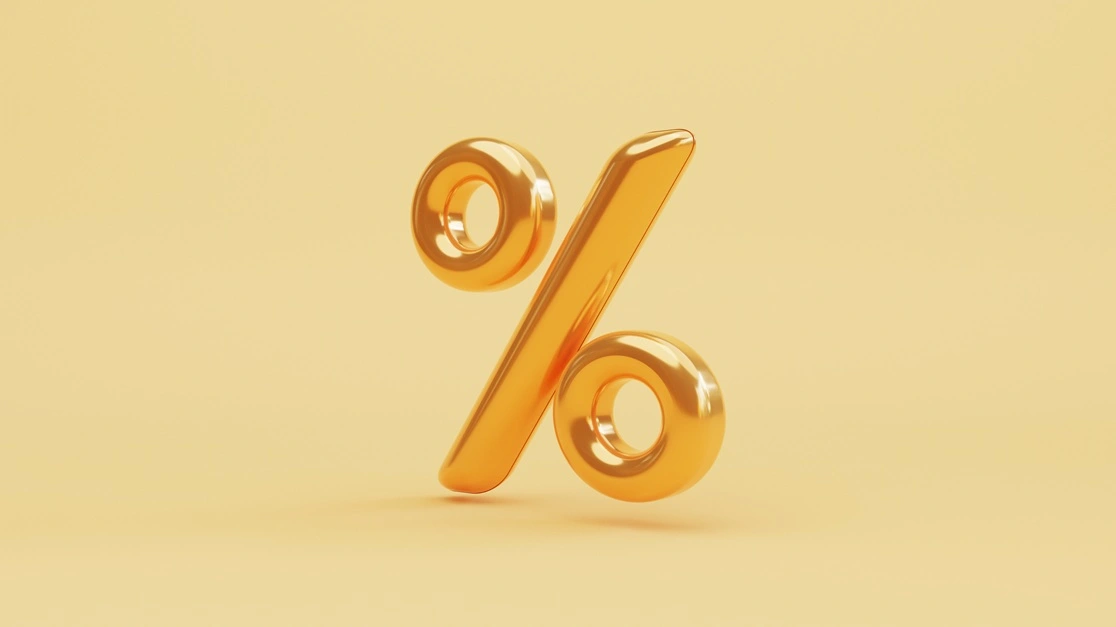Understanding the Reverse Repo Rate: A Key Component of India's Monetary Policy
June 09, 2025

On 9 June 2025, the Reserve Bank of India (RBI) cut the repo rate by 50 basis points, marking the third rate cut in 5 years. The current repo rate stands at 5.50% and the reverse repo rate at 3.35%. These rates are pivotal in shaping the nation's economic landscape, influencing everything from inflation to consumer spending. We have already shed light on repo rate. In this blog, we have decoded the concept of reverse repo rate and what it means for India’s economy.
What is the Reverse Repo Rate?
The reverse repo rate is the interest rate at which the RBI borrows money from commercial banks within the country. It serves as a tool for the central bank to control liquidity in the banking system. When the RBI increases the reverse repo rate, it encourages banks to park more funds with the central bank, thereby reducing the amount of money available in the economy. Conversely, a decrease in the reverse repo rate makes it less attractive for banks to deposit funds with the RBI, leading them to lend more to consumers and businesses.
The Role of Reverse Repo Rate in Monetary Policy
The reverse repo rate is instrumental in the RBI's monetary policy framework. By adjusting this rate, the central bank can influence short-term interest rates and manage inflation. For instance, to curb inflationary pressures, the RBI may increase the reverse repo rate, thereby reducing the money supply. On the other hand, to stimulate economic growth, the RBI might lower the reverse repo rate to encourage lending and investment.
Current Economic Context
In recent times, the Indian economy has faced challenges such as currency depreciation and fluctuating inflation rates. The weakening of the rupee has complicated the RBI's monetary policy decisions, particularly concerning interest rate adjustments. Despite these challenges, the RBI has opted to keep the reverse repo rate steady at 3.35%.
Effect of Reverse Repo Rate on Home Loans
The reverse repo rate significantly influences home loan interest rates, impacting borrowers' monthly outflows and long-term financial commitments. Here's how it works:
1. Relationship Between Reverse Repo Rate and Home Loan Interest Rates
Higher Reverse Repo Rate:
When the RBI increases the reverse repo rate, banks tend to park more surplus funds with the RBI due to higher returns. This reduces the liquidity available for lending, leading to an increase in home loan interest rates. As a result, borrowing becomes costlier for homebuyers, which may discourage new home purchases or refinancing.
Lower Reverse Repo Rate
A decrease in the reverse repo rate makes it less attractive for banks to deposit funds with the RBI. Consequently, banks have more funds available for lending, and competition among banks may lead to reduced home loan interest rates. Lower rates encourage homebuyers to take loans, boosting demand in the real estate sector.
2. Impact on Existing Home Loan Borrowers
- Borrowers with fixed-rate home loans are not directly affected by changes in the reverse repo rate, as their interest rate remains constant throughout the loan tenure.
- Borrowers with floating-rate home loans, however, experience fluctuations in their EMIs (Equated Monthly Instalments). When the reverse repo rate decreases, home loan interest rates are likely to drop, leading to lower EMIs and reduced interest outgo over the loan tenure.
3. Effect on Home Loan Affordability
- A lower reverse repo rate translates to lower home loan rates, improving affordability for prospective buyers. For instance, reduced interest rates mean lower monthly payments or the ability to borrow a higher amount within the same budget.
- Conversely, a higher reverse repo rate increases the cost of borrowing, making home loans less affordable and possibly slowing down the housing market.
Effect of Reverse Repo Rate on the Economy
The reverse repo rate plays a crucial role in shaping the economic environment of a country. Its effects are profound, influencing liquidity, inflation, interest rates, and overall economic growth. Here's how changes in the reverse repo rate impact the economy:
1. Liquidity Management
When the RBI increases the reverse repo rate, banks find it more lucrative to park their excess funds with the central bank. This reduces the liquidity in the economy as less money is available for lending to businesses and consumers.
A decrease in the reverse repo rate discourages banks from depositing funds with the RBI, pushing them to lend more. This increases liquidity in the market, stimulating economic activity.
2. Inflation Control
During periods of high inflation, the RBI may raise the reverse repo rate to reduce the money supply. This helps in curbing excessive spending and cooling down price levels. In contrast, during deflationary or low-inflation scenarios, a lower reverse repo rate encourages banks to lend more, increasing consumer spending and investment, thereby boosting inflation.
3. Impact on Interest Rates
Changes in the reverse repo rate influence the overall interest rate trends in the economy. For instance, a higher reverse repo rate can lead to an increase in deposit and lending rates as banks adjust their interest structures to align with RBI policies. A lower reverse repo rate can result in a decrease in interest rates, making borrowing cheaper for consumers and businesses.
4. Economic Growth
A lower reverse repo rate encourages borrowing and investment, which can lead to increased economic activities, higher employment, and robust GDP growth.
A higher reverse repo rate can restrict growth by making borrowing more expensive, which may slow down investments and reduce consumption.
5. Impact on Financial Markets
The reverse repo rate indirectly affects stock markets and bond yields. A higher rate can lead to reduced liquidity in financial markets, often causing stock prices to fall. Conversely, a lower reverse repo rate can inject liquidity, driving market growth.
For instance, during the COVID-19 pandemic, the RBI significantly reduced the reverse repo rate to 3.35% (a historic low) to infuse liquidity and support economic recovery. This move aimed to ensure that banks lent more to businesses and consumers, stimulating the economy during a crisis.
Final Thoughts
The reverse repo rate is a critical instrument in the RBI's toolkit for regulating the country's monetary policy. Understanding its function and impact can provide valuable insights into the broader economic environment and the central bank's strategies for maintaining financial stability.
Buying a house has never been this easy! Avail Ujjivan SFB’s wide range of affordable home loan products and enjoy a hassle-free loan journey. From house purchase loan to plot loans and home improvement loans, we have it all! Alternatively, you can browse through Ujjivan SFB product suite - our wide range of financial products are designed to make your financial life better.
Disclaimer:
The contents herein are only for informational purposes and generic in nature. The content does not amount to an offer, invitation or solicitation of any kind to buy or sell, and are not intended to create any legal rights or obligations. This information is subject to updation, completion, amendment and verification without notice. The contents herein are also subject to other product-specific terms and conditions, as well as any applicable third-party terms and conditions, for which Ujjivan Small Finance Bank assumes no responsibility or liability.
Nothing contained herein is intended to constitute financial, investment, legal, tax, or any other professional advice or opinion. Please obtain professional advice before making investment or any other decisions. Any investment decisions that may be made by the you shall be at your own sole discretion, independent analysis and evaluation of the risks involved. The use of any information set out in this document is entirely at the user’s own risk. Ujjivan Small Finance Bank Limited makes no representation or warranty, express or implied, as to the accuracy and completeness for any information herein. The Bank disclaims any and all liability for any loss or damage (direct, indirect, consequential, or otherwise) incurred by you due to use of or due to investment, product application decisions made by you on the basis of the contents herein. While the information is prepared in good faith from sources deemed reliable (including public sources), the Bank disclaims any liability with respect to accuracy of information or any error or omission or any loss or damage incurred by anyone in reliance on the contents herein, in any manner whatsoever.
To know more about Ujjivan Small Finance Bank Products Visit:"https://www.ujjivansfb.in"
All intellectual property rights, including copyrights, trademarks, and other proprietary rights, pertaining to the content and materials displayed herein, belong
to Ujjivan Small Finance Bank Limited or its licensors. Unauthorised use or misuse of any intellectual property, or other content displayed herein is strictly prohibited and the same is not intended for distribution to, or use by, any person in any jurisdiction where such distribution or use would (by reason of that person’s nationality, residence or otherwise) be contrary to law or registration or would subject Ujjivan Small Finance Bank Limited or its affiliates to any licensing or registration requirements.
FAQs
1. What is the difference between the repo rate and the reverse repo rate?
The repo rate is the rate at which the RBI lends money to commercial banks, while the reverse repo rate is the rate at which the RBI borrows money from commercial banks.
2. How does a change in the reverse repo rate affect inflation?
An increase in the reverse repo rate can help reduce inflation by decreasing the money supply, as banks are incentivized to deposit more funds with the RBI.
3. Why is the reverse repo rate lower than the repo rate?
The reverse repo rate is typically lower to encourage banks to lend more to the public rather than depositing excess funds with the RBI.
4. How often does the RBI review the reverse repo rate?
The RBI reviews the reverse repo rate during its bi-monthly Monetary Policy Committee meetings.
5. Can the reverse repo rate impact loan interest rates?
Yes, changes in the reverse repo rate can influence overall interest rate trends, affecting loan and deposit rates in the economy.
6. What happens when the reverse repo rate is increased?
Banks are encouraged to deposit more funds with the RBI, leading to a reduction in the money supply and potentially lowering inflation.
7. Is the reverse repo rate the same across all countries?
No, each country's central bank sets its own reverse repo rate based on its economic conditions and monetary policy objectives.
8. How does the reverse repo rate affect the common man?
Indirectly, it influences interest rates on loans and deposits, affecting borrowing costs and savings returns for individuals.
9. What is the current reverse repo rate in India?
As of January 21, 2025, the reverse repo rate is 3.35%
Latest Blogs

Dussehra 2025: How to Win Your Financial Battles with Smart Saving
Dussehra 2025 (also known as Vijayadashami) falls on Thursday, October 2, 2025.

eSIM Scam in India: I4C Warns Mobile Users About Rising Fraud – How to Stay Safe
The Indian Cybercrime Coordination Centre (I4C), a wing of the Ministry of Home Affairs, issued a strong warning to mobile users about the rapid increase in eSIM fraud in India.

How to Link PAN with Aadhaar: Step-by-Step Guide & Consequences of Not Linking
Linking your Permanent Account Number (PAN) with your Aadhaar is no longer just a best practice.

Annual Information Statement (AIS): A Complete Guide for Stress-Free ITR Filing
India’s tax season is in its final stretch.

ITR-1 (Sahaj) Restrictions: Income Sources Not Allowed & Filing Rules
With just a few days left before the 15 September 2025 deadline for filing Income Tax Returns (ITRs) for Assessment Year (AY) 2025-26, many taxpayers are rushing to submit their forms online.





